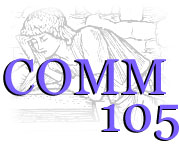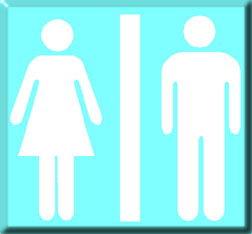
Office: HGH 210; phone: (408) 924-5378
Email: wooda@email.sjsu.edu
Web: http://www.sjsu.edu/faculty/wooda

|
Dr. Andrew Wood Office: HGH 210; phone: (408) 924-5378 Email: wooda@email.sjsu.edu Web: http://www.sjsu.edu/faculty/wooda |
 Are you pure? Do you consider yourself purely black or yellow or red or brown or white? Do you imagine yourself as completely male or completely female? Do you see yourself as perfectly rich or perfectly poor? This week, we explore readings that challenge the notion of demographic purity. Those markers of self such as race, gender, and class may seem absolute in the abstract, but they are rarely fixed or sure in the social worlds we inhabit. This is especially certain when you consider that we are composed of multiple and intersecting demographic markers. Forming the shape and definition of self has become quite complicated indeed. As Minnie Bruce Pratt notes, many of us live "in a world where gender and sex are fluid. Not an academic exercise. . ." (p. 88). How then, do we make sense of demographic markers of self in contemporary society?
Are you pure? Do you consider yourself purely black or yellow or red or brown or white? Do you imagine yourself as completely male or completely female? Do you see yourself as perfectly rich or perfectly poor? This week, we explore readings that challenge the notion of demographic purity. Those markers of self such as race, gender, and class may seem absolute in the abstract, but they are rarely fixed or sure in the social worlds we inhabit. This is especially certain when you consider that we are composed of multiple and intersecting demographic markers. Forming the shape and definition of self has become quite complicated indeed. As Minnie Bruce Pratt notes, many of us live "in a world where gender and sex are fluid. Not an academic exercise. . ." (p. 88). How then, do we make sense of demographic markers of self in contemporary society?
In his chapter, "Border Crossings" David Sibley describes boundary building as a process that demands the imagination of "other" - and invites possibility and peril. While noting the "thrill of transgression" when boundaries are challenged or breached, he focuses his chapter on the risks and confrontations that almost inevitably follow these transgressions. Whether these moments are thrilling or dangerous, or both, Sibley describes the process of boundary crossing as one of entering liminal space. This space emerges when two or more formations of identity overlap. For example, imagine sitting in a hospital waiting area. Outside, you are classified as healthy; past the reception area, you are a patient - but in that room, you are both and neither. The frustration of filling out forms and waiting in line emerges, in part, from that liminality, being neither here nor there but in between. The liminal border is porous; it allows transmission from place to place, but specific rules and strict discipline marks the point of transition: cards must be shown, documents must be signed, questions must be answered.
What kinds of organizations or - on a larger scale, societies - form particularly strict boundaries? Sibley notes that some communities (in the loosest sense of the word) may be compared as relatively low or high density, and that the more dense a community is, the more vigilantly it will guard its borders. One way to understand the role of communication in this border construction emerges from how these boundaries are defined and justified. Sibley draws from Mary Douglas' research on purification and defilement in premodern societies to illustrate this process. Dense in-groups mark the boundaries between themselves and others by claiming that those beyond the border are dirty, unclean - and therefore dangerous. What is most interesting about this rhetoric of defilement is its nature. As Douglas notes, "Those species are unclean which are imperfect members of their class or whose class itself confounds the general scheme of the world" (cited in Sibley, p. 37). In other words, one is unclean because one does not belong perfectly in one category or another.
Of course, the boundaries between pure and defiled, what Mircea Eliade terms the sacred and the profane, become more or less strict dependent upon the emergence of crisis. However, according to Sibley, crisis is often manufactured in society in order to clearly mark its boundaries. Moreover, the construction of crisis, moral panics in this chapter, does not necessarily stem from a logical or reasonable set of causes; occasionally these panics are quite arbitrary. To illustrate the role of moral panics in society, Sibley describes several examples which include the "Ranters" in seventeenth-century England and the AIDS panic of 1980s America and Europe. Where Sibley's chapter offers the most insight is his claim that these panics result from a need to isolate, survey, and control deviant "others", even to create them if necessary: "The moral panic will be accompanied by demands for more control of the threatening minority, for the state to provide stronger defences [sic] for, say, white, heterosexual values" (p. 41). The fact that "others" persist in dominant society provides the final component of this chapter. Sibley notes that oppressed minorities are often bounded in carnivalesque events, festivals, fairs, exhibits, and shows. Their accentuated difference, their clearly defined otherness, works when they are subject to public gaze in artificial settings. However, individuals and groups often use these settings to subvert this social surveillance and shine the glare of spectacle on their oppressors.
Questions for Consideration
2. Sibley describes the liminal zone between adult and child as what kind of person?
3. What specifically does Mary Douglas study to illustrate her explanation of uncleanness?
4. Along with the Ranters and the AIDS crisis, what is another example of moral panic described by Sibley?
5. What is an example of oppressed groups reversing the center-periphery relationship? (review pg. 44 if necessary)
Off-campus Resources
Silvia Mergenthal's Whose City? Contested Spaces and Contesting Spatialities in Contemporary London Fiction: "the paper will ask whether hierarchies of spatialities, in these novels, can be linked to constructions of national identity."
Note: These pages exist outside of San Jose State University servers and their content is not endorsed by the page maintainer or any other university entity. These pages have been selected because they may provide some guidance or insight into the issues discussed in class. Because one can never step into the same electronic river twice, the pages may or may not be available when you request them. If you have any questions or suggestions, please email Dr. Andrew Wood.